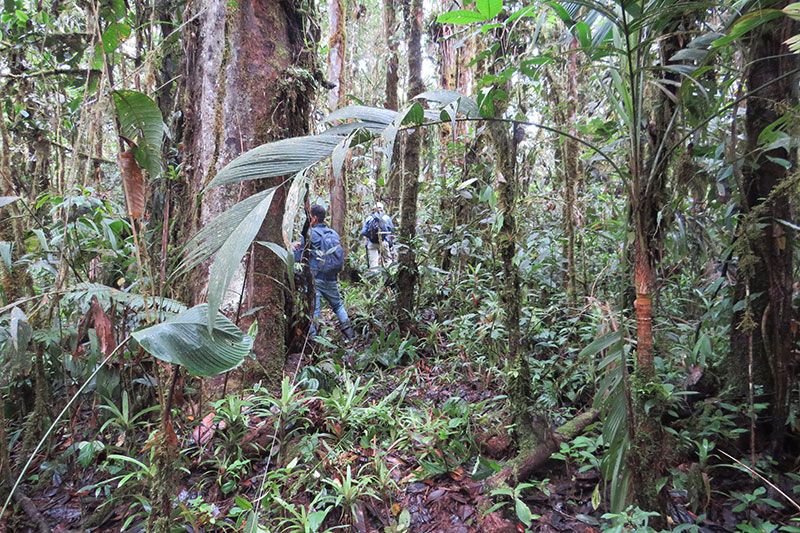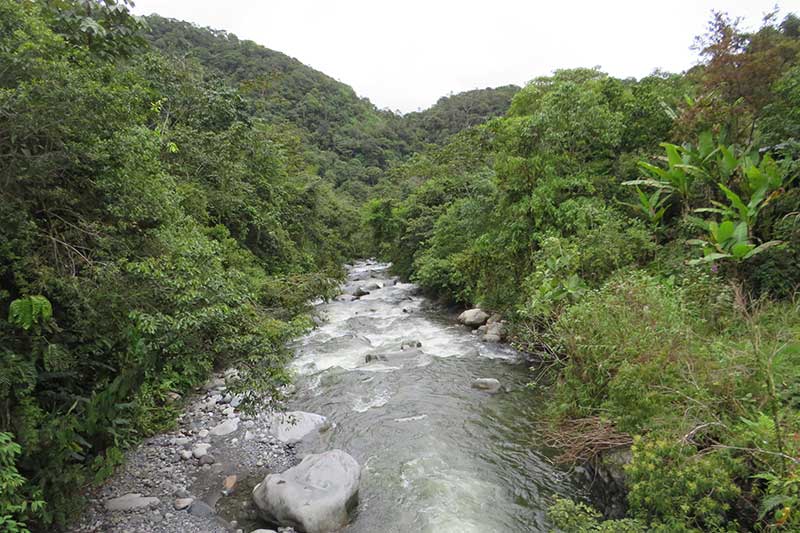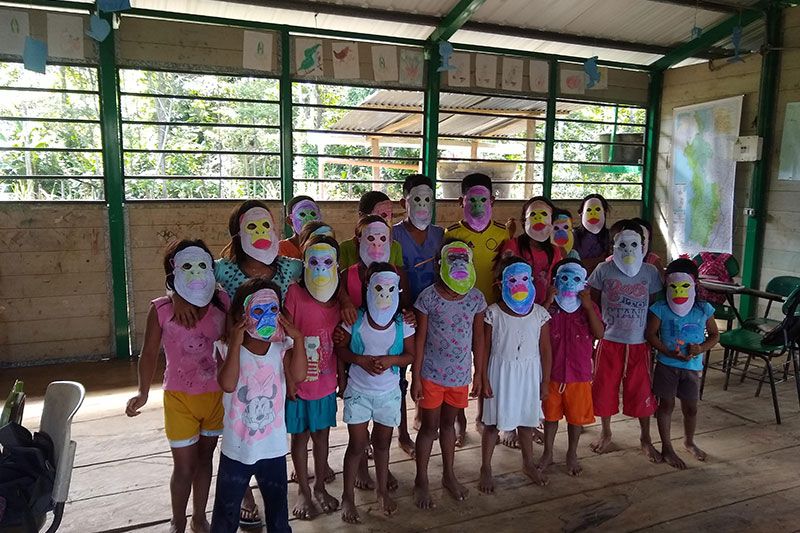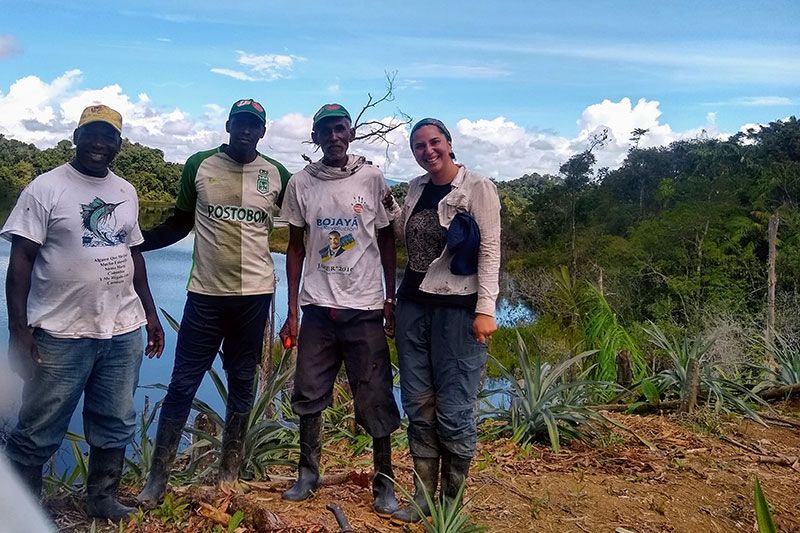A National Action Plan for rare black-headed spider monkeys
Black-headed spider monkeys – a life in the rainforest
Black-headed spider monkeys are designed for life in the rainforest. They hurl themselves through the canopy with grace, their long prehensile tails acting as a fifth limb. A special pad at the end of their tail, a little like a hand palm with unique fingerprint-like ridges, enables the tail to grip better.
These monkeys are only found in Panama and Colombia. Spending most of their time in the high canopy, they feast on nuts, fruits, leaves, bird eggs, and spiders. Large groups of up to 30 or so animals move through the forest communicating with screeches, barks and other calls.
Black-headed spider monkeys are endangered and in severe need of help. Loss of habitat, through logging and deforestation, are key threats to them. More than 50% of primate species are at risk of extinction, nearly all of them threatened by habitat destruction and degradation. So, PTES has been supporting Alma Hernández Jaramillo, of Neotropical Primate Conservation Colombia (NPCC), in her work during the past couple of years trying to protect these amazing creatures.
Threats to suitable habitat
Alma looked at historic and recent records of black spider monkeys and mapped the areas where they were found. Then she added information about the current forest cover and quality and identified that just under 50,000km2 of land is suitable for these animals. Much of northern Colombia is unsuitable, and most good habitat only remains in isolated patches. Monkeys avoid areas with higher human density – not surprising since this tends to be associated with deforestation and hunting.
Land uses and management have changed enormously in recent years. Many areas suffering from the negative effects are associated with increasing human populations. Ongoing deforestation and drug trafficking-related activities are likely to have accelerated the rate of deforestation in this area. This puts the species under greater threat. Alma’s work highlights how critical the plight of this species is. So she and her team are pushing for black-headed spider monkeys to be categorised as more threatened on the IUCN red list. This could help drive greater protection measures.
Selective logging of certain tree species, deforestation for agriculture and cattle ranching, and hunting by some indigenous communities, are all taking their toll. As are illegal gold mining and pollution from glyphosate spraying on illicit crops (mainly coca). Many areas Alma visited are increasingly vulnerable for the local communities as well as the wildlife. Nearly 70% of the areas she visited had illegal armed groups in their territories. The sheer remoteness of some of these regions, and the dangers imposed by the armed groups, mean law enforcement on the ground is rare. As logging of timber, gold and mineral extraction, and cocaine trafficking increase, communities are under siege or displaced. Alma’s findings have demonstrated the importance of strengthening community associations, and of initiating projects that generate alternative economic income to help reduce pressure on the forest and wildlife.
A National Action Plan
It’s critical to start now. The team worked with several schools and discovered that the violence has begun to shape the children’s perception of wildlife and their surroundings; they’re beginning to show a disconnect with the forest despite living in or alongside it. So Alma and her team are working with the more stable communities to devise conservation strategies. They’ve listed the key environmental problems and identified their needs and interests in terms of their relationship with the forest and nature.
Despite numerous challenges Alma and her group has made some tremendous achievements. In the face of Covid restrictions and critical security issues, they’ve gathered key evidence and, together with the Ministry of the Environment, have devised a national action plan for black-headed spider monkeys. This is key to directing management of the forest in future.
Priority areas have been mapped, taking into account forest integrity, landscape fragmentation and the richness of threatened primate species. The plan will work as a legal tool which public and private institutions will refer to as a guide for any activity they intend to carry out.
Despite these achievements, it’s important to highlight that the community conservation work remains highly vulnerable the constant changes within the authorities and the presence of illegal armed groups. There’s much still to do and the local communities need continued support to protect these threatened primates in the future.
Thank you for helping us fund Alma’s research to protect the future of black-headed spider monkeys in Colombia.
If you’d like to support more projects like this, please donate or set up a direct debit today.






